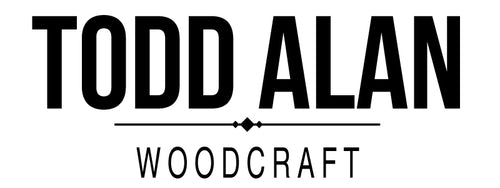Here’s why you should be using a wood cutting board!
Before the advent of plastic and the popularity of bamboo from Asian continents, wood has been the staple of butchering and cutting for upwards of a few thousand years in recorded history of Europe and the Middle East.
In more recent times, there has been a growing trend of alternative sources for cutting surfaces. Plastic / polyurethane, bamboo, granite, glass and other composite materials, but wood still maintains its hold as a valued kitchen resource.
As some of these alternative surfaces may be attractive to the eye, or attractive to the pocket book, a lot of times they are great for “show,” but not for “Go” when it comes to functionality and longevity.
My first cutting board was a family heirloom hand-me-down from my Grandparents, which belonged to my Great Grandmother, and was made by my great-great Grandfather.
Unfortunately for me, it had been mishandled and mistreated so bad by my grandparents not knowing how to care for it, by the time it was handed off to me, it was in pretty bad condition. My wife at the time, donated it when I was out of town, not knowing the family history- but wanting to get this abused and ugly piece of wood out of the house.
First rule of thumb… Treat your wood well and it will last lifetimes!!! Oh, and pass that knowledge down.
If you’re not sure how to care for a wood board, Todd Alan Woodcraft has a wonderful blog on how to care for your butcher block, cutting, serving and charcuterie boards here.
I’d highly suggest you read it because as you can see and my point being- a board made three lifetimes before me was handed down as heirloom. One of the many great reasons for using wood!
World wide, wood still is recognized as the best surface for chopping, cutting and preparing foods. Wood boards offer a solid, yet semi-healable surface. It is a tough and versatile renewable resource- wood almost heals itself from cuts, not scaring as easily when kept up and cared for.
Wood boards are easier on the blades of knives, keeping them sharper, longer than other materials. You can use a knife on most any surface but a wood surface makes a great firm yet soft stop for your blade, preserving the sharp edges and keeping the blades from dulling quickly. Other materials wear out knives faster requiring more frequent maintenance and sharpening.
Some of the main wood varieties Todd Alan Woodcraft selects to use for blocks and cutting boards are Ash, Maple, Jarah, Sapele, Purple Heart and Walnut.
Last thing to mention on why wood is one of the best surfaces, is a huge feature of wood is that it is one of the most antibacterial surfaces you can use to cut or butcher on.
We do suggest having two boards on-hand, one for all your raw meats and seafoods, and the other for washed vegetables and non-meat items, to help eliminate another step in the potential for cross-contamination of bacteria.
Several studies have found that there are natural antibacterial and antimicrobial properties in many varieties of harder wood due to its porous healing nature. Wood pulls bacteria in trapping and killing it through the drying process, but and I say this with a big BUT… that doesn’t mean you don’t have to clean, dry and oil your boards between uses, that’s always imperative.
Plastic cutting boards can collect bacteria over time hiding under the scratches and cuts from your knives. At first, they’re great for easy cleaning until they get scarred. Wood, by far is ultimately superior.
Since bacteria needs moisture to grow, you don’t want to create an environment conducive to its growth, so make sure your boards are completely dry before oiling them.
I hope this information helps you make a decision to go with Wood- one of the oldest, most trusted kitchen surfaces still readily available. A surface strong enough to handle all kinds of meat and veggies yet soft enough to care for your cutting utensils, and a surface friendly to helping reduce potential food borne illness.
I also hope you make the choice to pick up one of these beautifully styled, hand crafted in the USA, quality Todd Alan Woodcraft Cutting, boards.

